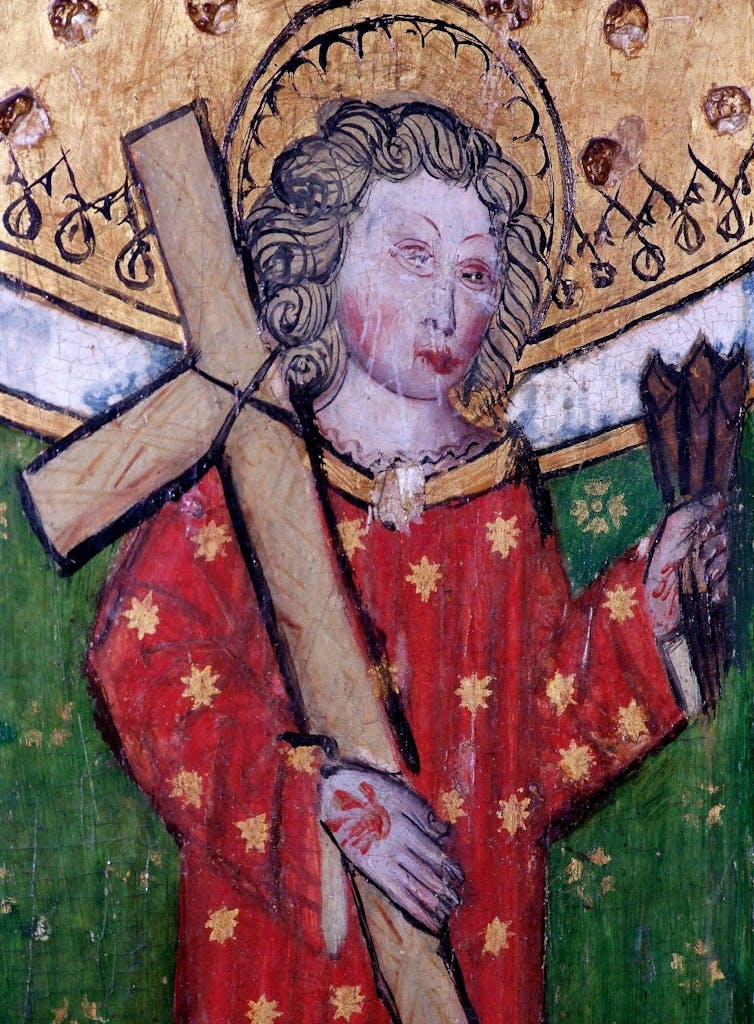Source: The Conversation (Au and NZ) – By Miles Pattenden, Senior Research Fellow, Institute for Religion and Critical Inquiry, Australian Catholic University
The medieval is part of the mosaic of modern Australia. Our nation’s heritage on this island continent is full of it: in aesthetics, institutions, laws, languages, identities, moralities. Indeed, the very idea of a university is medieval – a concept developed by the Catholic Church around the year 1100.
We have a crown and common law because of old-time kings called Henry. Sydney suburbs called St Ives, St Clair, St Leonards, St Marys reflect medieval England’s big-name saints.
Melbourne’s Luna Park has a giant gaping mouth you walk through to the amusements. Why? Because a medieval design mediated over centuries showed the gates of Hell this way.
All this is part of why the Australian Catholic University’s recent decision to axe dozens of humanities jobs, with the medieval and early modern studies program entirely disbanded, is so controversial.
People sometimes say the Middle Ages don’t matter in this bright new modern age. They were a time of backwardness, violence, racism, homophobia, witch-burnings and so on. Nothing like modern Australia!There’s no point in taxpayer dollars being spent studying a bunch of lords and peasants and weird men in dresses. If we want to know about that, why not just watch Game of Thrones?
Getting medieval
Medievalists interpret and explain the many meanings imbued in cultural forms and structures we navigate daily. You think the Middle Ages was just a parade of kings and queens – “one damn thing after another” to quote Alan Bennett’s The History Boys? You couldn’t be more wrong.
One “medieval” project at ACU today shows how old religious institutions responded to the problems of housing precarity and homelessness. (Anyone complaining about rent or mortgage payments lately?) Another, shows how contemporary conspiracy theories derive from medieval models. A third, how the solace of medieval spirituality was a key resource for men dying of AIDS in 1980s New South Wales.
You think we have a problem with antisemites now? Let me tell you about Norwich 1144. Islamophobia? You might be interested in the Crusades! Homophobia? What about the medieval legend of “sodomite Christmas”. (Jesus was born and all the gays died?)
Even those Game of Thrones producers have to get their ideas and aesthetics from somewhere. Usually, it’s from what medievalists have told them life was like back then. They talk to us, we consult for them. Industry partnership.
In fact, and paradoxical as it might seem, medieval history has always moved with the times. The fantastic success of the medieval on film courses (and the like) reflects this.
Medievalists just don’t ask the same questions today that the great beardy Bishop Stubbs did when he wrote his Constitutional History of England (the first book I remember mentioned in my first undergrad lecture). We’re concerned with many of the same questions and problems that other boffins study in social sciences, sometimes even hard sciences, law, economics, business and philosophy.
What does it mean to have an emotion, for instance? Neuroscientists can give you one idea. But they can’t help you describe the feeling. A medieval mystic like Margery Kempe can. And the fact that Kempe describes it differently to us is itself important self-knowledge.
It reminds us that the meanings of words change. So many stoushes in Australian public life would be resolved if people could just get a grip on that.

Wikimedia
Protecting the narrative around our heritage
For those of us of a liberal disposition there’s another compelling reason to keep the medieval close. We surrender it to less liberal people if we don’t.
My colleague at Deakin, Helen Young, has just won an ARC Future Fellowship to study (among other things) how neo-Nazis and other hate groups use the Middle Ages as a setting for their sick fantasies of white supremacism.
The Catholic Church, an organisation which cops a lot of criticism in Australia, deserves credit for its efforts to preserve an unsanitised, objectively studied medieval past for everyone – giving us resources to counter those who would use it as propaganda against us. The Vatican Library, in the heart of Rome, for instance, isn’t just a setting for Dan Brown page-turners. It is a great treasure of the modern cultural world.
Notorious nonsense that the medieval is “ornamental” to the modern – a silliness once espoused by former Prime Minister Tony Blair’s education minister in Britain – needs to be countered all the time. Such sentiments never lie quietly for long.
Just last year, then-Minister Stuart Robert said studying Elizabethan theatre – Shakespeare! – is only important to Great Britain (a political formation that did not exist in Elizabeth’s time).
We need to protect our cultural heritage from efforts to erase them. Especially at a time when we’re debating profound questions about our own society – how we recognise First Nations peoples in Australia, what it means to be Australian – we should make sure we retain a good understanding of the ongoing impacts of the European heritages that are common to many of us.
It’s a necessary resource for our civic debates.
![]()
Miles Pattenden has received funding from the UK Government, the Spanish Government, and the European Commission.
– ref. From Luna Park to neo-Nazis – why the Middle Ages still matters to middle Australia – https://theconversation.com/from-luna-park-to-neo-nazis-why-the-middle-ages-still-matters-to-middle-australia-214246








